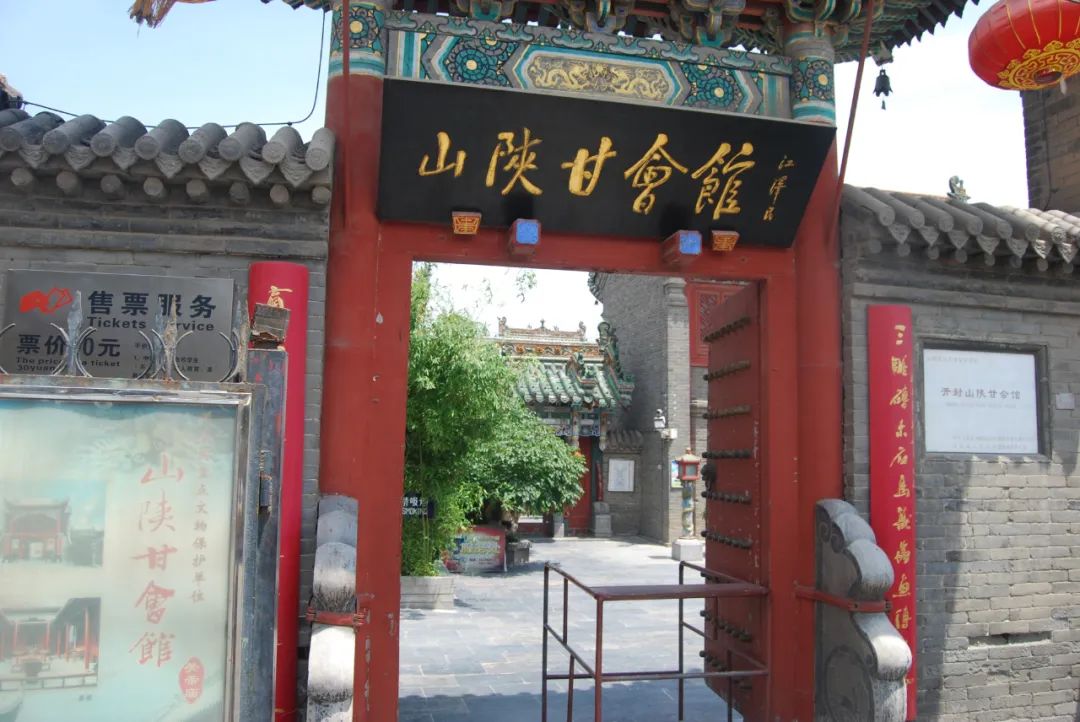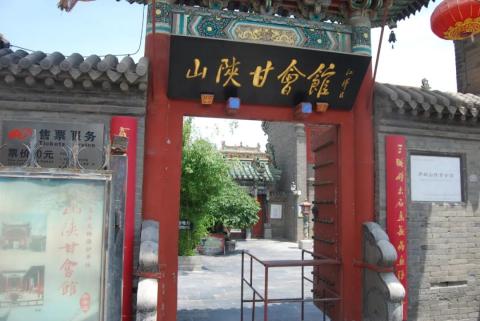Time: May 23, 2014
Location: Kaifeng City, Henan Province
Jingxiang’s Travel Notes Chapter 44 | "Yellow Earth" (6) Merchant’s Art Palace
The driver took me to a very deserted scenic spot, with no tourists at all. And when I bought the ticket and walked in, I realized that this place was worth seeing.This is a place where wealthy businessmen living in Kaifeng from Shanxi, Shaanxi and Gansu provinces in the Qing Dynasty raised funds to build a place for doing business, trading and connecting with fellow villagers. It was built during the Qianlong period of the Qing Dynasty and has a history of more than 200 years.

The first thing you see when you enter is this screen wall.
Since Guan Yu's hometown is Yuncheng, Shanxi, he is highly worshiped by Shanxi people. The character of this god of wealth can be summarized in four words: loyalty, justice, benevolence and courage. Obviously, these wealthy businessmen also use loyalty as a bond of connection, hoping to work together and make money together.Since this is a place where rich people gather, the buildings and facilities here must be worthy of their status. At that time, the time-consuming and money-consuming art of carving and painting was obviously something they could show off. capital. Therefore, the entire hall is a merchant's art palace.The artwork starts from the screen wall that you see as soon as you enter the door. In the center of the screen wall is the stone sculpture of two dragons playing with a pearl. However, these two dragons are not playing with Dragon Ball. When I took a closer look, I almost laughed out loud - it turned out that the two dragons were playing with spiders!
This immediately made me think of spider webs – doing business is all about personal connections, and I hope to weave a web of connections just like a spider builds its web. In fact, how can you do anything without paying attention to personal connections?The upper eaves of the screen wall are all decorated with brick carvings, and the content of the carvings is even more intriguing. If you don't look carefully, you will really miss it.
We can see many patterns of vases and bats, which mean "peace is blessing". As long as you taste the other patterns carefully, you will find many meaningful combinations. You might as well zoom in and take a look.
Just after looking at a screen wall, I can already confirm that this art palace has two characteristics: one is to show off the difficult carving craftsmanship, and the other is to use homophonic pronunciation to express good wishes.Due to the accumulation of two thousand years of feudal thought and the strict taboo system, the Chinese people always want to avoid pronouncing words with the same sound as the emperor's name or the names of their parents. For example, Emperor Wen of the Han Dynasty was called Liu Heng, but the people could not say the word "Heng", so Mount Heng was called "Changshan"; Emperor Taizong of the Tang Dynasty was named Li Shimin, so Liu Zongyuan wrote in "The Snake Catcher" that "officials who hope to understand the sentiments of the people can see "To (this article)" is written as "Whoever observes people's customs will get it." If you can't write "people's customs", you can only write "people's customs".It is precisely because of this habit that Chinese people are very sensitive to homophony. When you go to the hospital to visit a patient, you have to buy a bag of apples, because "ping" has the same pronunciation as "ping", which means peace and safety. In fact, Apple has nothing to do with whether it is safe or not. It is just that the taboo habit of the Chinese people has caused sensitivity to homophonic sounds. Therefore, many flowers are given nice names such as "Smooth Sailing", "Full House", "Happy Tree", etc. However, not many people know the original names of these plants.In this hall, you will see this homophony being used to its fullest.Let’s take a look at this theater next. Not only is it luxuriously built, but the carvings on the beams are also exquisite.
However, the other buildings in the hall are even more impressive. Test your eyesight. How many lions are there in the picture below?
Nine heads! And it’s hollow carving! "Nine lions" and "nine generations" are homophonic. Nine lions play with a rope, which means that the nine generations are connected with a rope, which means that the nine generations live under the same roof. The difficult skills and homophonic meanings are enough to show their strength and culture.Next, the carvings of this house are another scene. Can you see what the picture below is? 
Is it similar to "Along the River During Qingming Festival"? is a street scene. Counting it, there are 25 characters depicted in the picture, with different expressions and postures. Each one is portrayed lifelike. Hollow carving! I can’t accept it.There are so many carvings like this it's dizzying. 
In fact, too much and too dense is not a good thing, it will cause visual fatigue and reduce its viewing value. Let’s look at some simple patterns! Isn’t this a monkey?
That's right, monkey is homophonic to "hou", which means being granted the title of "hou" from generation to generation. Fortunately, there was no ambition to be crowned king, which reassured the emperor.The other photos will not be explained one by one:

If you were here, would you be interested in seeing these? It’s no wonder I’m a solo traveler because I go to places that other people think don’t have much to see. To be honest, I don’t think traveling to the ends of the earth to take photos or boarding the Oriental Pearl Tower makes much sense. I’m just used to being comfortable at home and want to find an excuse to go out and work hard. It has nothing to do with tourism. Real tourism should play the role of “travel”. "A journey of ten thousand miles is worth reading ten thousand books". Those who get on the bus to sleep, pee in the middle, and get off the bus to take pictures are willing to suffer. Their only purpose is that I have been to such and such attractions. Therefore, the vast majority of tourists will not come to this kind of place, because there is really nothing interesting here for them - who still likes to use these hollow carvings that are difficult to clean? Who wants to make their house so complicated?However, this is traditional culture! 
























